Daniel Strain
 A new advancement in theoretical physics could, one day, help engineers develop new kinds of computer chips that might store information for long periods of time in very small objects.
A new advancement in theoretical physics could, one day, help engineers develop new kinds of computer chips that might store information for long periods of time in very small objects.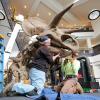 A full-scale skeletal reconstruction of a Triceratops—cast from the bones of several partial specimens found in the late 1800s—is now on display at CU Boulder's East Campus.
A full-scale skeletal reconstruction of a Triceratops—cast from the bones of several partial specimens found in the late 1800s—is now on display at CU Boulder's East Campus.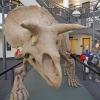 A new, full-scale skeleton of a Triceratops dinosaur has arrived on campus, shining a light on Colorado’s ancient past—a time when creatures like this three-horned dinosaur tromped through landscapes with palm trees, and flying reptiles with 20-foot wingspans called pterosaurs soared through the sky.
A new, full-scale skeleton of a Triceratops dinosaur has arrived on campus, shining a light on Colorado’s ancient past—a time when creatures like this three-horned dinosaur tromped through landscapes with palm trees, and flying reptiles with 20-foot wingspans called pterosaurs soared through the sky.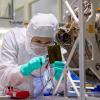 Scientists and engineers at the CU Boulder will soon take part in an effort to collect a bit of stardust—the tiny bits of matter that flow through the Milky Way Galaxy and were once the initial building blocks of our solar system.
Scientists and engineers at the CU Boulder will soon take part in an effort to collect a bit of stardust—the tiny bits of matter that flow through the Milky Way Galaxy and were once the initial building blocks of our solar system. At the start of World War I, a scientist named Eugene Clyde La Rue hiked the American West to estimate how much water flows down the Colorado River. His findings were ignored, but leaders today don't have to make the same mistake, says CU Boulder hydrologist Shemin Ge.
At the start of World War I, a scientist named Eugene Clyde La Rue hiked the American West to estimate how much water flows down the Colorado River. His findings were ignored, but leaders today don't have to make the same mistake, says CU Boulder hydrologist Shemin Ge.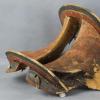 Recovered from looters, a new archaeological discovery from a cave in western Mongolia could change the story of the evolving relationship between humans and horses in the ancient world.
Recovered from looters, a new archaeological discovery from a cave in western Mongolia could change the story of the evolving relationship between humans and horses in the ancient world. The Colorado Ultraviolet Transit Experiment (CUTE) spacecraft, led by a team of scientists from CU Boulder, is about the size of a cereal box. It has also recorded incredibly detailed measurements of the atmospheres of planets hundreds of light-years from Earth.
The Colorado Ultraviolet Transit Experiment (CUTE) spacecraft, led by a team of scientists from CU Boulder, is about the size of a cereal box. It has also recorded incredibly detailed measurements of the atmospheres of planets hundreds of light-years from Earth.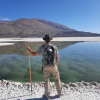 In Argentina's Puna de Atacama, a parched plateau more than 12,000 feet above sea level, a series of lagoons are home to microbial communities that seem to resemble nothing else alive on Earth today. But time may be running out to study them.
In Argentina's Puna de Atacama, a parched plateau more than 12,000 feet above sea level, a series of lagoons are home to microbial communities that seem to resemble nothing else alive on Earth today. But time may be running out to study them.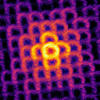 A new laser-based technique can create images of structures too tiny to view with traditional microscopes, and without damaging them. The approach could help scientists inspect nanoelectronics, including the semiconductors in computer chips.
A new laser-based technique can create images of structures too tiny to view with traditional microscopes, and without damaging them. The approach could help scientists inspect nanoelectronics, including the semiconductors in computer chips. In a new study led by CU Boulder, researchers surveyed more than 8,400 people in six former Soviet Union nations about their support for the controversial Russian leader. In Ukraine, at least, Russia's long and bloody invasion seems to have backfired on the leader.
In a new study led by CU Boulder, researchers surveyed more than 8,400 people in six former Soviet Union nations about their support for the controversial Russian leader. In Ukraine, at least, Russia's long and bloody invasion seems to have backfired on the leader.


